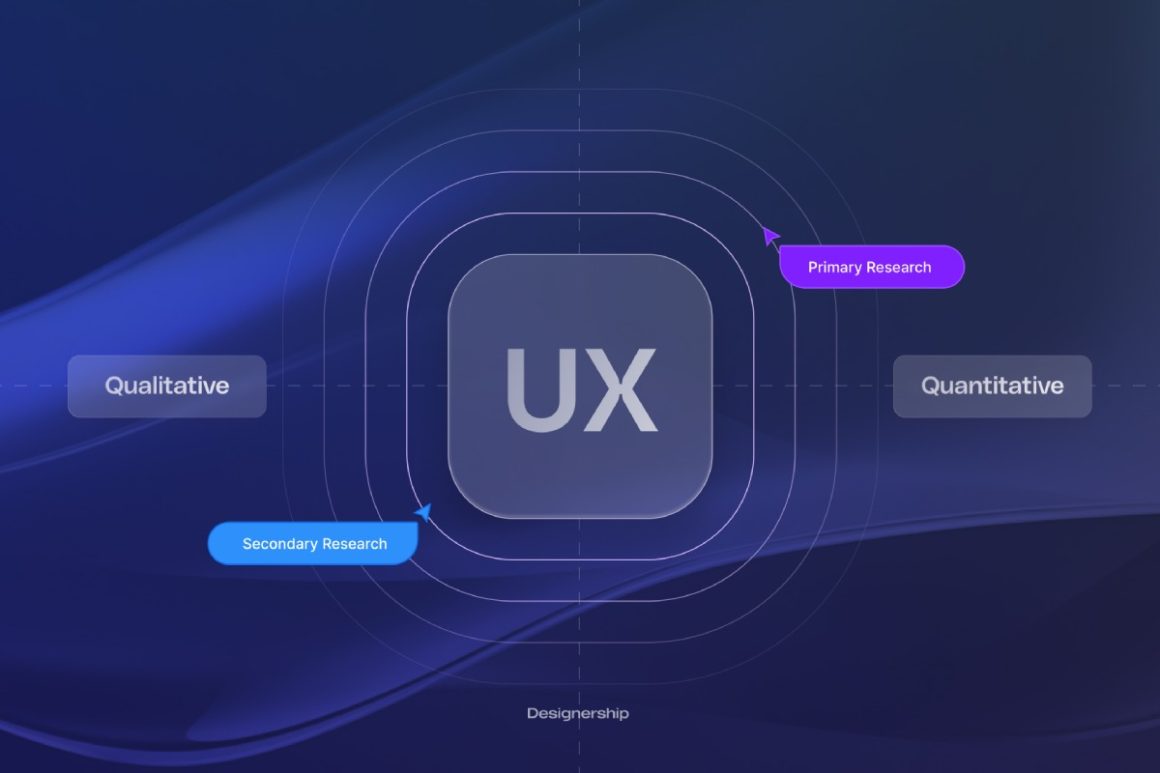If excellent user experience is a destination, user research is the compass guiding designers and developers to chart out the best course to reach it. Studies show every $1 invested in UX can yield a return of up to $100! Thanks to higher customer satisfaction and retention. So, investing in user experience (UX) isn’t just a nice-to-have. It’s essential.
But, how do companies ensure that their UX actually resonates with customers? The answer is UX research.
UX research involves gathering insights into how users interact with a product to make informed design decisions. The key to effective results from this process is understanding how to interpret the collected data.
For any UI UX design agency, using a variety of research methods is crucial. Each method brings unique insights into customer satisfaction. Let’s go through five popular UX research methods, exploring how they can help you measure and enhance customer satisfaction.
Table of Contents
User Surveys
User surveys are one of the easiest yet most effective ways to gather direct feedback from customers. You can ask specific questions about their preferences and pain points.
By systematically asking questions, surveys help capture users’ emotional responses and assess whether the product is meeting their needs.
How It’s Done: Surveys are run online, typically through email or within the product interface. Google Forms, Typeform, or SurveyMonkey are the commonly used tools.
Data Collection: Responses are aggregated and segmented to easily identify trends.
Analysis: Look for recurring themes in the answers and ratings on satisfaction-related questions. For instance, if many users rate a feature poorly, it may need improvement.
This method is relevant at any stage of the buyer journey, especially post-launch or after a customer completes a specific action.
Usability Testing
Usability testing is a hands-on method. As real users are observed as they navigate the product, it reveals areas where users struggle. This helps businesses discover user frustrations and make data-driven improvements.
How It’s Done: Users are asked to complete specific tasks on the product. Researchers observing their actions note any difficulties. This can be done in person, or remotely using tools like Lookback or UserTesting.
Data Collection: Observational data and user feedback are documented. The common frustrations or errors will be highlighted.
Analysis: Look for patterns where users hesitate or make mistakes. For example, if several users struggle to complete a task, this could indicate an unclear design element.
Usability testing is ideal during early design stages or before major updates to pinpoint potential issues.
Interviews and Focus Groups
Going deeper into customer attitudes and experiences yields qualitative insights that surveys or usability tests might miss. Open dialogue in interviews and discussions allows the users to express nuanced opinions. It helps designers capture the emotional aspects of customer satisfaction.
How It’s Done: In one-on-one interviews or group discussions, users are encouraged to share their thoughts on the product. Interviewers guide the conversation to gather valuable, personal feedback.
Data Collection: Conversations are recorded or transcribed, and then reviewed for common themes.
Analysis: Use thematic analysis to group similar responses and identify key pain points or desires. For example, if multiple users express frustration with navigation, it signals a UX issue worth addressing.
You can use these methods early in the design process or before significant changes to capture detailed user feedback that’ll help improve the design.
Heatmaps and Click Tracking
See where users are interacting most on a page, to find out which elements attract attention and which are ignored. These method helps understand what users find valuable. Designers can identify the elements drawing user interest and adjust layouts accordingly.
How It’s Done: Hotjar and Crazy Egg track clicks, taps, and scrolls on each page. The visually represented data on these tools are called “heat” (areas of higher activity).
Data Collection: Heatmap data shows high-activity areas, while click tracking highlights where users engage most.
Analysis: Evaluate patterns to identify popular elements or areas of low engagement. For instance, if important content is in a low-heat area, consider repositioning it for better visibility.
Heatmaps and Click Tracking are most useful after launching a live product or feature to assess real-world interactions. You can continue monitoring heats and clicks to understand changes in engagement.
Net Promoter Score (NPS)
NPS is a quick way to quantify user loyalty and satisfaction. By asking users how likely they are to recommend your product, you get a big-picture view of satisfaction. It can be invaluable for identifying areas that need refinement.
How It’s Done: Users score a single question on a scale from 0-10 about how likely they are to recommend the product. This can be done via email, in-app messages, or pop-ups.
Data Collection: Users are categorized as Promoters (9-10), Passives (7-8), or Detractors (0-6) as per the score they give.
Analysis: A high NPS indicates strong satisfaction, while a low score points to underlying issues that need to be addressed.
NPS is commonly used post-interaction or at regular intervals to track customer sentiment over time. Regularly tracking NPS scores allows companies to monitor changes and measure the impact of design improvements.
Investing in UX research methods like these is necessary for creating a digital product that truly satisfies customers. Each method, from simple surveys to in-depth usability tests, brings unique insights that help ensure users find value and satisfaction in the product.
Working with an experienced UX agency or professional team can simplify this process significantly. Professionals know which methods work best for different stages. It helps companies make informed, strategic improvements at the right time.
In the end, UX research isn’t just about improving interfaces; it’s about creating products people love to use. So, take the time to understand your users—it’s worth every penny.


